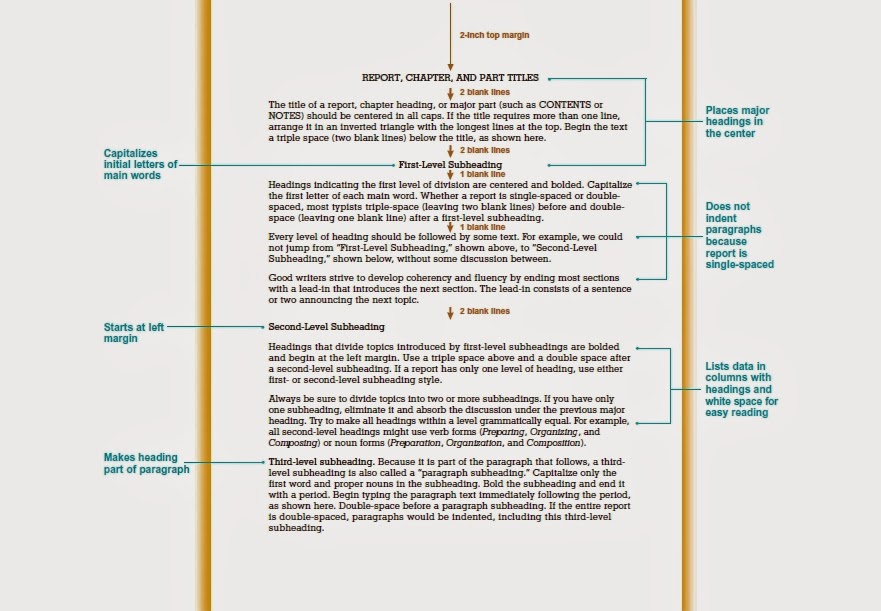To guide readers through the data, you need to provide the equivalent of a map and road signs. For both formal and informal reports, devices such as introductions, transitions, and headings prevent readers from getting lost.
1. Introduction.
One of the best ways to point a reader in the right direction is to provide a report introduction that does three things:
- Tells the purpose of the report
- Describes the significance of the topic
- Previews the main points and the order in which they will be developed
Remember that the introduction provides a map to a report; switching the names on the map will ensure that readers get lost. To maintain consistency, delay writing the introduction until after you have completed the report. Long, complex reports may require introductions, brief internal summaries, and previews for each section.
2. Transitions.
Expressions such as on the contrary, at the same time, and however show relationships and help reveal the logical flow of ideas in a report. These transitional expressions enable writers to tell readers where ideas are headed and how they relate.
The following transitional expressions enable you to show readers how you are developing your ideas.:
- To present additional thoughts: additionally, again, also, moreover, furthermore
- To suggest cause and effect: accordingly, as a result, consequently, therefore
- To contrast ideas: at the same time, but, however, on the contrary, though, yet
- To show time and order: after, before, first, finally, now, previously, then, to conclude
- To clarify points: for example, for instance, in other words, that is, thus
In using these expressions, recognize that they do not have to sit at the head of a sentence. Listen to the rhythm of the sentence, and place the expression where a natural pause occurs. If you are unsure about the placement of a transitional expression, position it at the beginning of the sentence. Used appropriately, transitional expressions serve readers as guides; misused or overused, they can be as distracting and frustrating as too many road signs on a highway.
3. Headings
Good headings are another structural cue that assists readers in comprehending the organization of a report. They highlight major ideas, allowing busy readers to see the big picture at a glance. Moreover, headings provide resting points for the mind and for the eye, breaking up large chunks of text into manageable and inviting segments. Functional headings are useful for routine reports. They are also appropriate for sensitive topics that might provoke emotional reactions. Talking headings provide more information and spark interest. Unless carefully written, however, talking headings can fail to reveal the organization of a report. With some planning, though, headings can be both functional and talking.
The best strategy to help you create helpful talking headings is to write a few paragraphs first and then generate talking headings that sum up the major point of each paragraph. To create the most effective headings, follow a few basic guidelines:
● Use appropriate heading levels.
The position and format of a heading indicate its level of importance and relationship to other points.
● Capitalize and emphasize carefully.
Most writers use all capital letters (without underlines) for main titles, such as the report, chapter, and unit titles. For first- and second- level headings, they capitalize only the first letter of main words such as nouns, verbs,adjectives, adverbs, names, and so on. Articles (a, an, the), conjunctions (and, but, or, nor), and prepositions with three or fewer letters (in, to, by, for) are not capitalized unless they appear at the beginning or ending of the heading. For additional emphasis, most writers use a bold font.
● Try to balance headings within levels.
Although it may not be always possible, attempt to create headings that are grammatically similar at a given level.
● For short reports use first-level or first- and second-level headings.
Many business reports contain only one or two levels of headings. For such reports use first-level headings (centered, bolded) and, if needed, second-level headings (flush left, bolded).
● Include at least one heading per report page, but don’t end the page with a heading.
Headings increase the readability and attractiveness of report pages. Use at least one per page to break up blocks of text. Move a heading that is separated from the text that follows from the bottom of the page to the top of the following page.
Source: Midge Gillies, Business Writing: The Essential Guide To Thinking And Working Smarter.

No comments:
Post a Comment